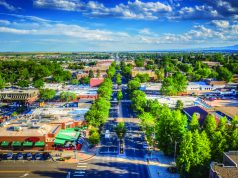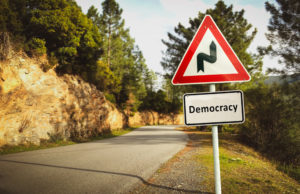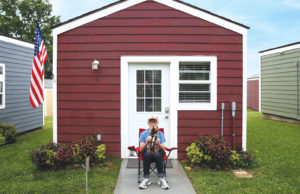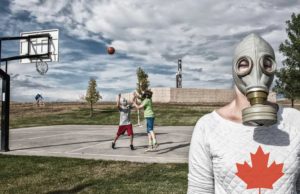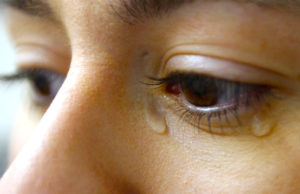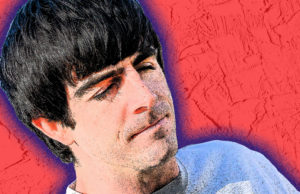
I wish I could say my passion for Colombia was born from a deep intellectual yearning — from the pages of a Gabriel García Márquez novel or a love for Spanish Baroque painting or a lifelong exploration of the Spanish language — but that’s not the case. Not even a little. Like most Americans I read more European and North American authors. I took my last art class in high school and I’m sure it involved more clay than Baroque. I studied French through college.
Nope, my passion for Colombia, the reason I traveled there, was not particularly intellectual at all. A little more Eat, Pray, Love than The Motorcycle Diaries.
Yeah, that’s right: I was in love with a Colombian. And no, this is not easy for me to write.
The more I fell in love with the Colombian, the more I fell in love with his country — I was enamored with the idea of the chilly mountains of Bogota, with the eternal spring of Medellín, with the colorful streets inside the walls of Cartagena.
But most of all I was enamored with the Colombian. He and I would spend hours talking about… well, anything: our families, his childhood in Colombia, mine in North Carolina, about world politics, about music and movies.
I started to learn a little Spanish. I became obsessed with rock en español, particularly a band called Soda Stereo (Que descansa en paz, Cerati). I learned a little more Spanish. I met sus abuelos y tías y tíos. I read 100 Years of Solitude. I ate buñuelos and orejas de elephante. A little more Spanish worked its way into my brain. Halloween costumes, Indian food, inside jokes, a bungled bus ride from Aspen to Snowmass that left us begging for a ride at a Mexican discothèque in Carbondale… the memories piled up.
And one day I couldn’t take it anymore: I professed my love… en español, por supuesto! It was calculated, as Spanish makes a distinction between types of love; te amo is for romantic love, te quiero for familial or very close platonic relationships (it gets even more nuanced than that, but I digress).
“Te amo… Y creo que lo sabes,” I wrote in a text — I love you… and I believe you know it. I couldn’t bear to say it out loud. I could barely stand to wonder if I’d chosen my words wisely — should I have used pensar, to think, instead of creer, to believe? Did I forget a word? Why am I thinking about this shit? I felt foolish, at 29, telling a man “I love you” via text, but I knew, despite our laughter and sweet talk and piles of memories, he didn’t feel the same way.
His response took time. Hours, at least as I remember it.
“No lo sabía,” he finally wrote back, “pero lo sentí.” I did not know it, but I felt it.
I knew what his vague response meant. In the end, he didn’t love me, at least not the way I loved him. And later on, as we analyzed the situation, he wondered what was wrong with what we had.
Honestly, nothing was wrong with what we had, except it wasn’t what I wanted. I felt childish. Selfish, even.
We were so entrenched in each other’s lives that we continued to talk and visit one another even after realizing we had different goals. I couldn’t tell what hurt more: the fact that he didn’t love me, or the fact that he wouldn’t just go away.
In his defense, I wouldn’t push him away. I would try, he’d object, I’d relent, and around we went. I was exhausted and angry, with him and myself. But mostly I was ashamed: Ashamed that I couldn’t find the strength to push him away; ashamed that he didn’t want to build a life with me; ashamed that I loved him; ashamed that I’d told him.
I was ashamed of my life. I found myself staring at 30 and wondering when that happened, and what exactly was I working toward? Other things were compounding my pain — overwhelming bills, my grandmother’s deteriorating health, and, perhaps most draining, a toxic situation at work. I stopped running and going to yoga and rarely left my apartment beyond work and the occasional trip to the grocery store. I gained weight and rarely looked in mirrors. It was a small victory if I managed to wear something that didn’t have elastic in the waistband.
I felt hollow.
I tried to date, to disastrous results, and the emptiness expanded.
Through it all, Colombia had become a fascination. A geographic representation of the person I loved. I could love Colombia, all its beauty and history, without fear of rejection. South America in general became a fantasy. It began to represent my hope that there was somewhere else I could be, that maybe life could be about more than just keeping my head above water and tolerating what could only be called emotional abuse at work.
But living out my dream would require real money, and that was in short supply.
And then it happened — an overbooked holiday flight home to see my family left me with a $600 flight voucher.
I booked a ticket to Medellín a month later.
A close friend who speaks Spanish joined me and, true to our strange relationship, my unrequited Colombian love arranged for us to meet with his best friend for our first few days in Medellín.
And before I knew it, I was stepping into José María Córdova airport in Medellín — the city of eternal spring.
The first thing I remember seeing in the airport was a sign that read, “Todos por un nuevo pais: Paz, Equidad, Educación.” All for a new country: Peace, Equality, Education. At that moment, bleary-eyed from too much wine on the plane and nervous about speaking Spanish with the customs agent, the phrase merely translated itself into English in my mind. But first impressions are often shallow, and we’ll come back to the sign later.
Most Americans don’t think of European-tiny, rain-soaked streets lined with broad-leafed trees and tropical flowers when they hear Medellín. They don’t think of concerts in university centers or sipping a latte in a quaint cafe because for decades, Colombia’s second largest city suffered extreme violence as the center of Pablo Escobar’s drug operation. The drug kingpin created a bloody urban war in Medellín as he competed with other cartels for control of the country’s cocaine trade. In 1988, Time magazine called it “the most dangerous city on earth.”
When people hear Medellín, the first associated word is still often “cartel.”
But the city has worked hard to shed its violent reputation, and indeed, it’s now called one of the most progressive cities in Latin America. It’s situated in the Aburrá Valley, the basin of the Medellín River, where its downtown skyline and high-rise apartment buildings are set against the jagged peaks of the Andes from every direction. There are still vestiges of Medellín’s troubled past — shanty towns, favelas, hug the hillside, far higher than you’d believe possible. Many of these neighborhoods, like the infamous Comuna 13, were built illegally during the reign of Escobar. People simply poured into the hillside and built makeshift homes with tin roofs. The houses, however simplistic, are colorful, just like the flowers that grow seemingly everywhere in the city.
Medellín’s consistently spring-like weather keeps flowers blooming yearround — everywhere you turn there are bursts of tropical colors and the shimmer of water built up from humidity. The dreamy climate makes Medellín the epicenter of the North American commercial flower market. If you’ve ever gotten a dozen roses on Valentine’s Day, it’s more than likely the flowers came from Medellín.
The airport sits on a hill overlooking the city. My friend and I shared a cab from the airport into town with another American, and I giggled with delight as the driver weaved in and out of traffic down the hill. Everything was glistening from fresh rain. We’d traveled to Colombia during the rainy season. But the rain didn’t get me down. It felt like it was washing away a year’s worth of built up pain and frustration. For the first time in a long time, I felt light. I felt new.
Because our “tour guide” lived there, we stayed in El Poblado, the wealthiest neighborhood in Medellín. The swanky district grew in the early ’90s when the city’s elite fled the drug-fueled violence occurring in the city’s center. The
streets are narrow, and most businesses reside in open-faced buildings since the climate is so mild — it makes people watching a necessary pastime.
Our hostel was nothing special, but it was clean and the owners were kind. There was a patio that overlooked a street lined with bars, dry cleaners, other hostels, hole-in-the-wall eateries. Young folks rode scooters to deliver Dominos pizza from the very American store at the corner. American pop and rock music poured out of nearly every bar and restaurant. A few blocks from the hostel was Parque Poblado, an urban park where young people often meet in the evenings to plan their night’s adventures and drink.
Our new friend, and appointed guide to Medellín, met us at our hostel just a few hours after we’d settled in. There were hugs and kisses on each cheek, and away we went into the drizzle of our first night in Medellín, a complete stranger leading the way.
The next four days went by in a blur — we explored the flower-lined greenways of the city, meandered through crowded street markets, walked around public gardens, watched a band play Sublime’s “What I Got” at La Universidad de Medellín and partied alongside the beautiful young people in El Poblado’s clubs. Everywhere I looked there were trees and flowers and running water. Nature seems like it’s working around the clock to take back what man has unrightfully deemed his.
But my favorite experience in Medellín was riding the cable cars that run up the steep hillside of the valley and through those colorful favelas.
The public transportation system was created to help people in the least developed areas move around the city and, believe it or not, public transportation played a pivotal role in reducing crime. The addition of two Metrocable lines in 2006 provided access to those hard-to-reach shanty towns. Now Medellín’s poorest residents don’t have to rely on unpredictable buses or make arduous journeys down the mountainside for jobs, schooling, healthcare or even basic shopping trips.
I’ll never forget watching to city grow smaller and smaller as we rode up, children playing soccer seemingly everywhere across the hillside neighborhoods, laundry hung across every balcony, scooters and tiny taxis zipping down every street. I looked out and saw a city that had overcome its adversity despite decades of senseless violence. I saw a city that was proud of what it had become. I saw poverty, but I saw happiness. I saw hope for the future. I saw kids who were going to have safer childhoods than their parents had.
From that cable car I stared at the city and wondered why I couldn’t rise above my own tribulations.
I spent another week in Colombia, experiencing the magical realism of Cartagena’s calm waves, and learning about how climate change is affecting coffee production on a small organic finca in the Sierra Nevada de Santa Marta, a costal mountain range in Northern Colombia. I ate fresh crab on a beach and rode a donkey up a mountain. I talked to other travelers about their journeys and ate mangos and avocados fresh off the trees. I cried some nights thinking about the pain from the past year. I cried about my selfish “firstworld” problems. I cried because I felt better and just the same all at once.
When the time came to fly home, I was back in José María Córdova airport, back in the city of eternal spring where my heart had felt light for the first time in a year.
As I dropped my bag off and made my way through customs, I noticed the same sign I’d seen when I first arrived in Colombia, “Todos por un nuevo pais: Paz, Equidad, Educación.” All for a new country: Peace, Equality, Education. It had meaning to me now. I felt like my passion for Colombia was rooted in something much larger than my unrequited love of the Colombian. Perhaps it was rooted in some deep intellectual yearning after all — the desire to know myself. The desire to find inner peace. The desire to see myself as equal to those around me. My constant search for education.
Hadn’t my love for the Colombian and for his country led me to start learning Spanish? Hadn’t I discovered new music and new literature? Hadn’t I become well-versed in South American politics? And hadn’t I learned that love doesn’t always mean the same thing for different people?
It seemed to me that if Colombia could rise above the violence and desperation, I could rise above my sadness and fear. It would take time. It would take patience. I would have to continually seek peace, equality and education.
Todos por un nuevo Caitlin.
I guess the answer to all of my questions was Colombia.


